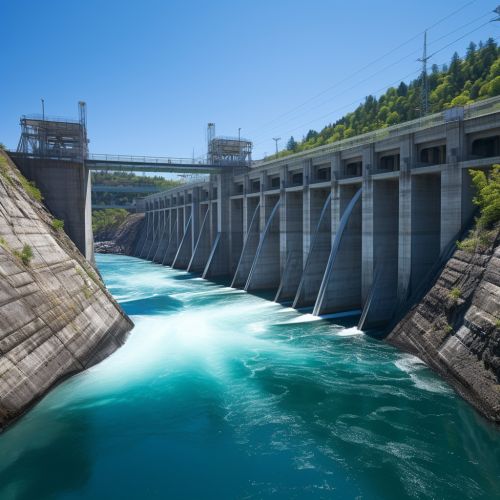Hydrostatic pressure
Introduction
Hydrostatic pressure is the pressure exerted by a fluid at equilibrium due to the force of gravity. It increases in proportion to depth measured from the surface because of the increasing weight of fluid exerting downward force from above.
Principle
The principle of hydrostatic pressure states that the pressure at any point in a fluid at rest is the same in all directions. This principle is derived from the Pascal's Law, which asserts that pressure applied to an enclosed fluid is transmitted undiminished to every part of the fluid and the walls of its container.
Calculation
The calculation of hydrostatic pressure in a fluid is derived from the basic equation for pressure, P = F/A. In this equation, P represents pressure, F represents force, and A represents area. The force exerted by a fluid under gravity in a column of height h is the weight of the fluid, which is its volume multiplied by its density ρ, and the acceleration due to gravity g. The volume of the fluid is its cross-sectional area A times the height h, so the force F = ρghA. Therefore, the pressure P = ρgh.
Applications
Hydrostatic pressure has numerous applications in various fields. In civil engineering, it is used in the design of dams, retaining walls, and any structure that needs to withstand the pressure of a fluid at rest. In medicine, it is used in understanding blood pressure and fluid distribution in the body. In geology, it is used in understanding how pressure varies with depth in the Earth's crust and mantle.


Hydrostatics in Physics
In physics, hydrostatics is the branch of fluid mechanics that studies fluids at rest. It encompasses the study of the conditions under which fluids are at rest in stable equilibrium, and is contrasted with fluid dynamics, the study of fluids in motion.
Hydrostatic Pressure in the Human Body
In the human body, hydrostatic pressure plays a crucial role in the function of the circulatory system. It is the force that the blood exerts against the walls of the blood vessels. This pressure is what allows blood to flow from the heart to all parts of the body.
Hydrostatic Pressure in Engineering
In engineering, understanding hydrostatic pressure is vital for designing structures that come into contact with fluids, such as dams, ships, and even buildings in flood zones. Engineers need to calculate the hydrostatic pressure that a structure will experience at its deepest point to ensure it can withstand the force exerted by the fluid.
Hydrostatic Pressure in Geology
In geology, hydrostatic pressure refers to the pressure exerted by a fluid at rest. This concept is used to understand how pressure varies with depth in the Earth's crust and mantle, which has implications for understanding geological phenomena such as earthquakes and volcanic eruptions.
